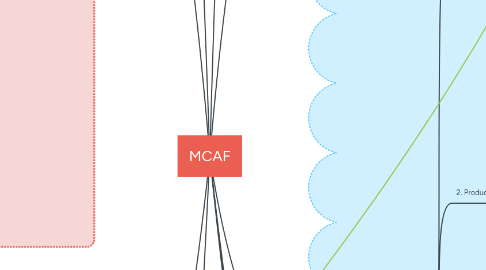
1. Operations
1.1. Orders - external systems
1.2. Orders - internal systems
1.3. Storage
1.3.1. KPIs
1.3.1.1. Customer Service
1.3.1.2. Dispatch
1.3.1.3. Quality Control
1.3.1.3.1. Accurate stockcount
1.3.1.4. Account Management
1.4. Freight
1.4.1. KPIs
1.4.1.1. Customer Service
1.4.1.2. On Time
1.4.1.3. Quality Control
1.4.1.4. Account Management
1.4.1.4.1. PODs
1.5. Chep
1.5.1. Transfer reconciliations
1.6. Stock levels
1.6.1. Manufacturer orders
1.6.1.1. KPIs
1.6.1.1.1. DIFOT%
1.6.1.1.2. Stock Turn (days)
1.6.2. Packaging levels
1.6.2.1. KPIs
1.6.2.1.1. 2% wastage
1.6.2.1.2. Traceability
2. Quality Assurance
2.1. HACCP
2.1.1. Annual internal audits on Policies and Procedures
2.1.2. Customer complaints (3)
2.1.2.1. Quarterly Analysis
2.1.3. Critical incidents (3)
2.1.3.1. Customer response times
2.1.4. Corrective actions (6)
2.2. Approved Supplier List (4)
2.2.1. MCAF products
2.2.2. Private Label
2.2.2.1. GFSI
2.2.3. Distribution and Storage
2.2.3.1. ISO, HACCP or Government
2.3. Manufacturer Audits
2.3.1. Micro testing (5)
2.3.1.1. Aldi - biannual
2.3.1.2. Simply Fresh - annual
2.3.2. Quarterly production record audit
2.3.3. Retention samples
2.4. Product Analysis
2.4.1. Quarterly sensory assessment (5)
2.4.2. Annual customer cook step
2.4.3. Annual Label review
2.4.4. Annual product specification review
2.4.5. Product testing
2.4.5.1. Private Label
2.4.5.2. MCAF products
2.4.6. Traceability
2.4.6.1. Annual product recall review
3. Core Business Functions
3.1. Budgets and forecasts
3.1.1. Rolling Production Forecast
3.1.1.1. Retail replenishment reports
3.1.2. Gross margin / SKU
3.1.2.1. Reports
3.1.2.1.1. Reckon SKU margin
3.1.2.1.2. Fishbowl sales
3.1.3. Overheads
3.1.3.1. Reports
3.1.3.1.1. Adaptive net profit
3.2. Governance
3.2.1. Monthly reporting
3.2.1.1. KPIs
3.2.1.1.1. Financials
3.3. Finance
3.3.1. Cashflow
3.3.1.1. Forecasts
3.3.1.2. Accounts Receivable
3.3.1.2.1. Woolworths vendor statement rec.
3.3.1.2.2. Coles transaction listing rec.
3.3.1.2.3. Doubtful debts
3.3.1.3. Accounts Payable
3.3.1.3.1. AP Turnover
3.3.1.3.2. Reckon ABA upload
3.3.2. Cash management
3.3.2.1. Reconciliations
3.3.2.1.1. Bank
3.3.2.1.2. Factoring facility
3.3.2.1.3. Trade faciliity
3.3.3. Accounting
3.3.3.1. Payroll
3.3.3.1.1. PAYG
3.3.3.1.2. Superannuation
3.3.3.2. Tax compliance
3.3.3.2.1. BAS
3.3.3.3. LDB Liason
3.3.3.3.1. EOY functions
3.3.3.3.2. FBT
3.3.3.4. Miscellaneous
3.3.3.4.1. Reckon account reconciliations
3.3.3.4.2. Reckon classes
3.3.3.4.3. Fishbowl reconciliations
3.3.3.4.4. Depreciation schedules
3.3.3.4.5. Monthly Accruals
3.3.4. Insurances
3.3.4.1. Workcover
3.3.4.2. Business policy
3.3.4.3. Marine Transport
3.3.4.4. D&O
3.4. HR
3.4.1. Job descriptions
3.4.1.1. KPIs
3.4.1.2. BPM
3.4.1.3. Procedures
3.5. I.T.
3.5.1. Cloud
3.5.1.1. Server
3.5.1.2. Microsoft subscriptions
3.5.1.3. Software solutions
3.5.1.3.1. Adaptive
3.5.1.3.2. Fishbowl
3.5.1.3.3. Reckon
3.5.1.4. Telephony
3.5.2. Websites
3.5.3. Social media accounts
3.6. Knowledge Management
3.6.1. File System
3.6.2. Version control system
3.6.3. Team collaboration tools
3.7. Legal
3.7.1. Contract management
4. Stragegic Business Functions
4.1. Business Strategy
4.2. Business Plan
4.3. Business Continuity Plan
4.4. Risk Management Plan
5. Sample Management
5.1. New products
5.2. New packaging
6. Other Revenue
6.1. Government Funding
6.1.1. Innovation Connections
6.1.2. Business Entrepreneurs Program
7. Sales
7.1. Customer Channel Plan
7.1.1. 1. Retail
7.1.1.1. Replenishment
7.1.1.1.1. DIFOT %
7.1.1.2. Buyer
7.1.1.3. Broker
7.1.1.3.1. Renegotiate?
7.1.1.3.2. New Broker?
7.1.1.3.3. Retender?
7.1.1.3.4. Internal Resource?
7.1.1.4. Department Head?
7.1.2. 2. Aldi Private Label
7.1.3. 3. New players: Costco, Kaufland
7.1.4. 4. Independent Retail
7.1.4.1. Entertaining Foods
7.1.4.2. Metcash
7.1.4.3. Drakes
7.1.4.4. Ritchies
7.1.4.5. Cornetts
7.1.5. 5. Food Service
7.1.5.1. Portal compliance
8. Marketing
8.1. MCAF Plan
8.2. Brand Plan
8.2.1. Category Strategies
8.2.1.1. Identify Channels and Customers
8.2.1.2. Category lifecycle identification
8.2.1.3. "Thought Leader"
8.2.1.4. Good, Better, Best
8.2.1.5. Category analysis (data)
8.2.1.6. SWOT - Category, Customer, Competitor
8.2.2. Shopper Research ("U&A")
8.3. Social Media
8.3.1. Quarterly Social Media Plan
8.4. Website
9. Innovation
9.1. 1. Range Review Timelines
9.1.1. Project Timelines per customer
9.2. 2. Product Strategy Development
9.2.1. Ideo Process
9.2.1.1. Understand and observe
9.2.1.1.1. Real people / Real situations
9.2.1.2. Brainstorm
9.2.1.2.1. o 60 minutes only (90 max) o Playful, visual o No notes, don’t take turns o Fill all walls and flat spaces with butcher paper, use post-its and Sharpie markers (the power of spatial memory) o Sketching, mind mapping, diagrams, stick figures o Watch for chances to build and jump o Number your ideas o Vote on best ideas
9.2.2. 1. Opportunity Identification
9.2.2.1. New to the world
9.2.2.2. New product lines (Me Too)
9.2.2.3. Additions to existing product lines
9.2.2.4. Revisions of existing products
9.2.2.5. Repositioning
9.2.2.6. Cost reduction
9.2.3. 2. Opportunity Analysis
9.2.4. 3. Idea Genesis
9.2.5. 4. Idea Selection
9.2.6. 5. Idea and Technology Development
9.3. 3. Product Design and Process Development
9.3.1. Bench top samples
9.3.2. Sourcing new raw materials
9.3.3. Sourcing new packaging
9.3.4. Cost estimates
9.3.5. Regulatory compliance (FSANZ)
9.3.6. Allergen assessment
9.4. 4. Product Commercialisation
9.4.1. Factory trial
9.4.2. Sensory evaluation
9.4.3. Market test
9.5. 5. Product Launch
9.5.1. Label and claim compliance
9.5.2. Artwork
9.5.3. PIF
9.5.4. Recipe and costing finalised
9.5.5. Manufacturing docs
9.6. 6. Post Launch
9.6.1. Operational and financial analysis

